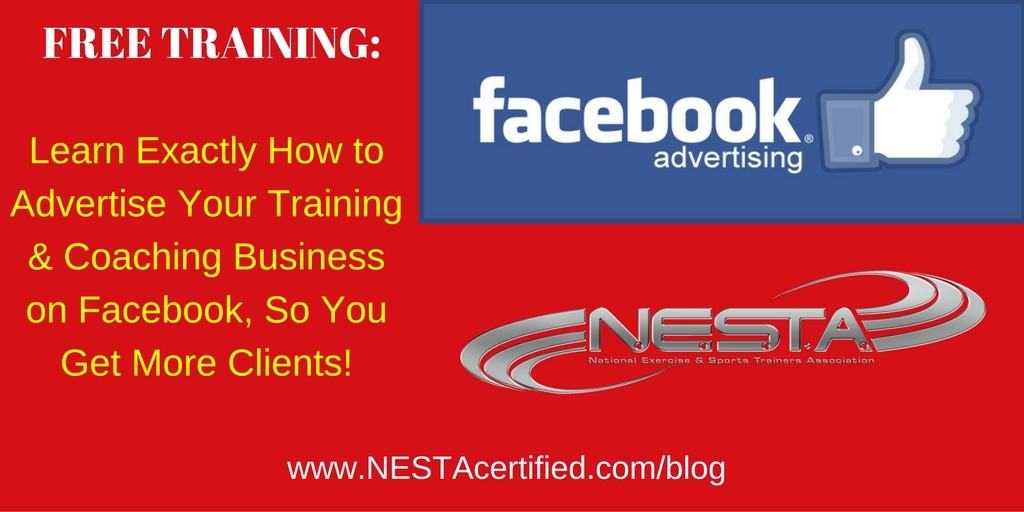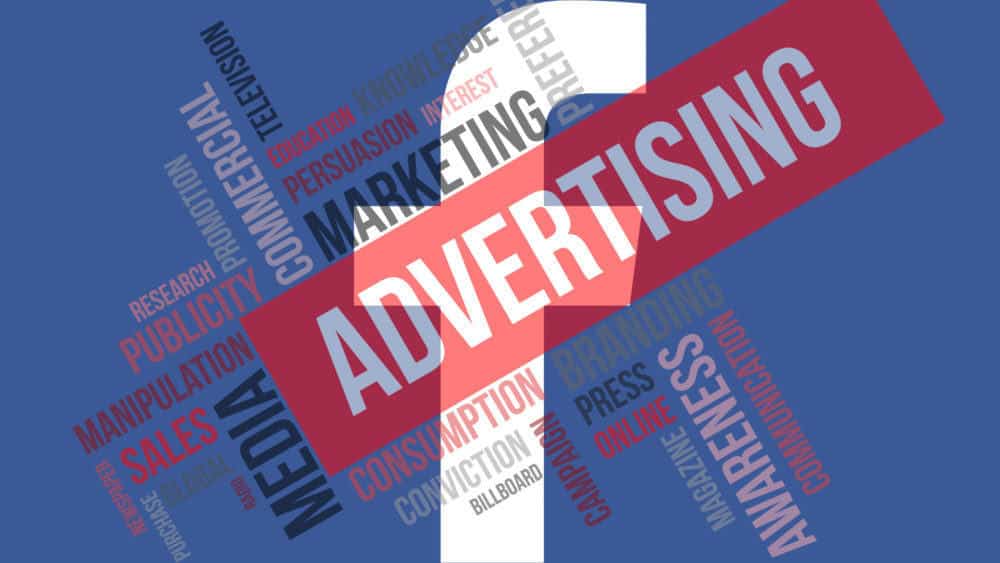
Facebook can now boast more users than the total world population of human beings back in 1900!
That’s a huge and critical online market for your personal coaching or fitness brand .
Yet when it comes to online business development, the massive, second recent downgrading of “published content” in Facebook’s algorithm, has been a serious wake-up call across the content marketing world.
Luckily that barrier can be navigated very effectively through the strategic, and highly cost-effective use of Facebook ads.
In this new guide for beginners, I’m going to share the latest best practices, tips and tactics for building and running Facebook ad campaigns that work. And it can be way less expensive than you might imagine.
First, you need to start by:
Understanding The Landscape
Have you noticed recently that some of your friend’s posts will show up much more frequently and prominently in your newsfeed?
Are you seeing less content from major brands you might not have connected with directly on Facebook like you were seeing before?
It turns out Facebook has an all-knowing algorithm that measures how much you interact with your Facebook friends.
It then shows you posts of friends you seem closer with while suppressing posts from your newsfeed of friends you haven’t been hanging out with – at least online.
Facebook does this because there are often so many posts from people, it had to figure out a way to prioritize what people see.
The best way to fix this on your personal feed is to visit your friend’s Facebook page (for example key influencers in your niche).
Like and comment on a post or two and send them a private message. Even if they don’t reply, you’ll notice more of their posts will now show up in your newsfeed.
The same thing is happening when it comes to Facebook fan pages.
A long time ago, Facebook needed a way to prioritize what users will see in their newsfeed, and one of the major fixes implemented was to only show someone updates from a fan page they like if that person interacts with the page.
So, if you like or comment on a fan page, Facebook will show you more posts from that page because it assumes interacting with it is a sign you want to see their content.

This was the Introduction of the “Pay-to-Play” Business Model on Facebook.
Pages were faced with the necessity of paying for ads in order to get in front of the same size audience they used to have organic access to.
Facebook made it up to frustrated pages by implementing incredible ad-options and laser targeting for ads.
Most recently, Facebook updated their algorithm to again prioritize friend posts over fan Page posts, even more. It’s an effort to protect the Facebook user from being overrun with Page posts and missing out on friend posts.
For many world class life coaches and industry leading fitness pros with fan pages, it meant getting locked into the “pay-to-play” business model more than ever.
Marty Swant says most Pages saw a 42-56% percent drop in impressions. Some experienced an even bigger drop in visibility.
While there are some best practices we can implement to optimize our content for organic reach, knowing how to run an effective ad campaign is critical. And that means you need to really:
Know Your Campaign Objective
At first, you had three basic choices when it came to the types of ads you could choose from.
You could run an ad that would get people to like your Page. Or you could get people to click on your ad to be directed to your website. Or you could bring attention directly to the content you offer by boosting a specific post.
Example Objective 1 : An example of why you might set up an ad for page likes is if you just set up your page. Other than inviting your friends to like your page, you probably want to get more likes to extend your connection reach beyond your personal network.
Plus, more likes on your page mean more opportunity for organic reach with your posts. This would be the perfect time to decide on the Page Likes Ad Objective.
Example Objective 2: If you have been posting, you’ll notice Facebook lets you know how many impressions each post has. This is valuable information.
If you notice a post is getting more organic attention than usual, go ahead and take that as a sign to boost it. That way you capitalize on the success that post is already seeing.
You’ll not only bring attention to your content but with the right targeting, you’ll also encourage more page likes.
Now we have so much more variety in the ad objectives we can choose from:
We can promote a call to action, such as a newsletter sign-up or product purchase. In fact, people can now purchase items directly through Facebook, so they never need to leave the app.
We can promote events, ask for reviews and comments, even post an ad to Instagram.
Always choose the objective that makes the most sense for your business and audience. Facebook has a great resource that can help with this decision.
Best Practice: If you’re just starting out, I suggest you go with one of the original three options (i.e., page likes, website clicks, or a boosted post). They are simple to set-up and easy to adjust should you want to make adjustments once the ad is underway.

Decide on a Budget & Calendar
Luckily, Facebook lets you choose a budget as low or high as you need or want. Some large organizations will spend hundreds of thousands on a single ad. Others spend $5 dollars a day.
If this is your first ad, begin with a budget that will let you run through the motions of submitting, running, and evaluating an ad without the risk of a large ad spend.
Spending a lot only to potentially find out your audience targeting was off, or your ad objective wasn’t exactly what you want, is much easier to cope with when you aren’t dealing with the frustration of overspending.
Best Practice: Many start-ups will run a 30-day ad every month for $1-5 dollars a day. They refresh the ad creative according to the analytics and then resubmit a new ad for the next month.
Design Your Ad Creative
Your ad creative is the visual you put together for your ad. Design basics tell us to make sure we choose a compelling image that will attract people away from the thumb scrolling. We want them to pause and click on your ad.
Use bright colors, especially in the oranges and reds palette, because those colors are rare in most news feeds, giving you the opportunity to really stand out.
Use an easy-to-read font if you choose to add text. Don’t depend on people to pause just to figure out what you’re saying.
Best Practice: Penelope Liot has great advice on ad creatives that are purposeful, smart, and provoking.
Marketing science does play a role in designing your ad, but it doesn’t haven’t to be a barrier. Know your purpose and explore the ways you can communicate your purpose to consumers.
Write Your Ad Copy
Writing ad copy is an entire industry unto itself. There are very talented professionals out there who charge millions to write a few simple lines of text. That being said, there are talented professionals that can help you for just a few dollars.
If hiring someone to help you out isn’t in the budget yet, this is something you can do all by yourself.
Do your research and think through what you want to say. Know your brand promise and when possible, communicate in terms of what the consumer will want, receive, or how they will benefit, rather than simply listing product features.

Best Practice: Brevity is your friend. Facebook used to have a hard limit of 20% text on your graphic.
They have eased up on how strictly this is enforced, but the limitation was put into place in response to Facebook user feedback. Statistically, ads with more than 20% text received more complaints and very few click-throughs. For this reason, the 20% rule remains a best practice. Use this Facebook tool to measure the text on your ad.
Select Your Audience
Facebook offers laser targeting when it comes to ads. It’s more specific, and there are more options than almost any other platform. That being said, having so many options can be complex and confusing your first time around.
If this is your first ad, stick to the interests and behaviors section. Begin with basic demographics. How old is your ideal client? Are they male, female, or either? Where are they? You can list countries, states, cities, even specific zip codes.
Choose specific interests and behaviors that your ideal client will take part in. For example, wellness coaches and fitness pros prospecting for new online clients to like your page may seek interests such as “beginner fitness” rather than “body building.” Danny Goodwin has specific guidance on how to target the right people.
Best Practice: Target your ideal client. The two biggest problems people run into are designing for an audience that is too broad or too narrow.
You may want everybody to see your ad, but by being specific about who your ideal client is, you’ll get better results. Being too specific will mean you spend more per impression, and you’ll see fewer results.
A/B Test, & Evaluate the Results
This is the one step most people avoid, ignore or forget. Don’t let that happen to you. Keep reading!
Ensuring this step is completed intelligently is the difference between a pro and a novice that will often end up wasting money.
A/B testing means you create two ads that are exactly the same except for one component.
You can test your ad creative by submitting two ads with a different look (i.e. rich visual image) and feel, but to the same audience with the same budget and on the same days. It’s important to also test your ad copy.
It’s also a great ad testing strategy to submit the same ads, but alter your audience demographics to really fine tune and measure ad performance.
A/B testing is something professionals do to help them learn what works best. That way when an important campaign comes up, you can run the ad(s) with confidence in your investment. Really: it’s not rocket science. It’s only been made to look that way.
Facebook offers very specific insights about who your followers are, where they are, and what they like.
You’ll see how they interact with your content and draw conclusions about how to better reach them or offer content that will grow interest and engagement. And of course:
If you’re scaling your business, delegate. There are people who specialize in social media and the science of advertising on Facebook. Enlist help and use this guide as a way to check on your team’s performance.
Best Practice: There can be a learning curve involved in understanding what you’re looking at when you first examine Facebook analytics and insights, but without this information, your ads and investments are guesswork.
Whatever you choose, know that Facebook ads are an important tool for any business and fan page. Understanding how to leverage the types of objectives, niche-focus, and real-time analytics is critical for all people and organizations who want to build a presence on one of the largest most powerful platforms available.





